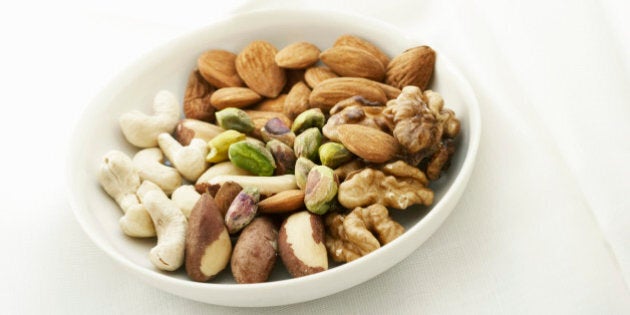
Once pushed aside for being too fatty and calorific, over the years nuts have gained a sterling reputation for their health benefits -- but are some nuts better for you than others?
"The crux of it all is that nuts are a healthy plant food," explained Charlene Grosse, Accredited Practising Dietitian and DAA spokesperson.
"If we look at nuts as a collective group, they all provide a range of nutrients," Grosse told HuffPost Australia. "They are high in healthy fats (which are your monounsaturated and polyunsaturated fats), contain a moderate amount of protein and are a good source of dietary fibre."
So which nut is the best?
According to Grosse, all of them -- with the exception of the salted varieties.
“If you have a little mix of them across the week, you get a variety of the different benefits," Grosse told HuffPost Australia.
"The main thing to be considering is the salt that is added -- this is particularly a health concern for people that need to be mindful of their sodium intake".
So while doing the food shopping, reach for raw or roasted nuts -- not salted. And yes, that probably goes for the chocolate covered nuts too.

Although people often avoid nuts due to their high fat content, Grosse explained that while nuts are high in fat, they are higher in nutritional value.
"There’s often confusion surrounding nuts for people wanting to manage their weight, but the recommendation is to include a handful a day for the health benefits -- particularly the healthy fats [which] are good in terms of heart health,” Grosse said.
In fact, studies suggest that eating just 30 grams of nuts per day may help reduce the risk of developing heart disease by 30-50 percent.
How many nuts is 30 grams?
- 20 almonds or hazelnuts
- 15 cashews, macadamia nuts or pecans
- 30 pistachios
- 10 walnuts
Here's a quick nutrient break down of common nuts:
Almonds: high in protein, calcium and vitamin E
Brazil Nuts: higher in fibre and selenium (just two brazil nuts will give you 100% RDI of selenium)
Cashews: low GI and high in non-heme (plant) iron
Chestnuts: low in fat, low GI and high in fibre
Macadamias: highest in monounsaturated fats and high in thiamine and manganese
Walnuts: high in alpha linoleic acid (ALA) and good plant source of omega 3 and antioxidants
Pistachios: high in protein, potassium, antioxidants, and also contain plant sterols (to help in the management of cholesterol)
Don't like eating nuts on their own?
Try:
- Topping yogurt with fruit with crushed nuts
- Adding a small handful into smoothies
- Choosing cereals with added nuts
- Adding chopped nuts when baking
- Sprinkling pine nuts on salads
- Making pesto